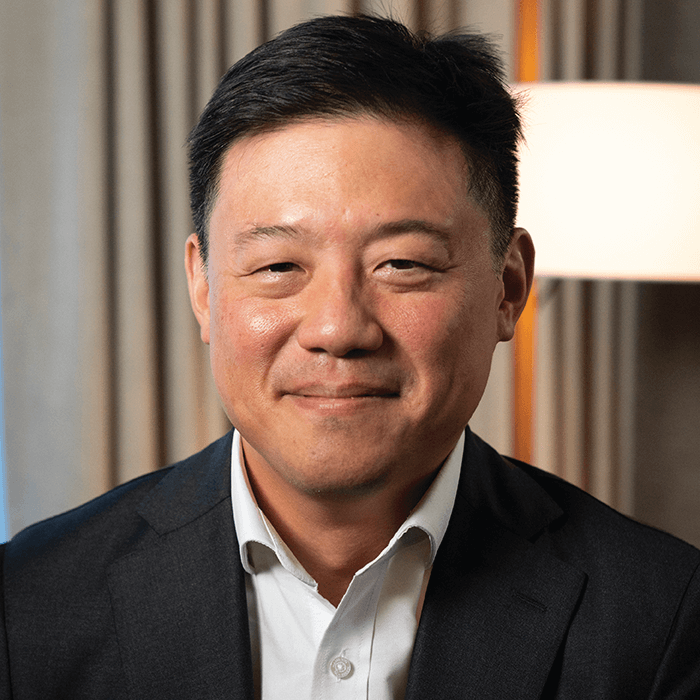
Wonsang “Robert” Yu of Yuyu Pharma talks about his new peptide treatment for dry eye disease. He explores the current market of dry eye disease treatment and discusses the future of his product, which he hopes will be available on the global market.
Tell us about yourself and your background…
I’m the CEO of Yuyu Pharma. The company was founded by my grandfather over 80 years ago; I am the third generation in the business. Before Yuyu, I was a sales rep in Brooklyn, New York, and then had the opportunity to work for Novartis in Asia. I was based in Singapore and trained sales reps and contract clinical research associates in Singapore, Malaysia, Indonesia, India, Korea, and Japan. That experience gave me the opportunity to understand how Novartis works as a global company. Now, I have aspirations to do the same thing with Yuyu.
What is the current unmet need in dry eye disease?
There are still patients looking for a solution for dry eye disease. From my experience as a sales rep, I know that patients want something that’s affordable and that works. If that’s not on the market, there’s demand. The same is true for dry eye disease; good products already exist, but people are not satisfied with them. Based on preclinical studies, when we discovered that our peptide might have anti-inflammatory properties unlike other treatments on the market, we saw an opportunity – so we decided to develop YP-P10.
Can you explain YP-P10’s anti-inflammatory properties?
When we found out through phenotypic screening that this peptide had anti-inflammatory properties, we started to explore potential applications. Dry eye disease took precedence because it had so many unmet needs in terms of drug discovery. So we started to develop our peptides into eye drops.
One of the main challenges of developing dry eye drugs is that they have to be water-soluble for easy application. Fortunately for us, our molecules are highly water-soluble and our studies so far indicate that the peptide has anti-inflammatory properties. We have completed six toxicology studies demonstrating that YP-P10 appears to have a very good safety profile. Now we need to see whether it really works, so we are doing a clinical trial.
We received IND clearance to begin clinical studies from the FDA back in April 2022. We are currently recruiting 240 patients in seven sites across the US. So far, enrollment is going according to plan and we anticipate results in the first half of 2023.
Have you considered using biomaterials such as hydrogels or nanoparticles to enhance YP-P10’s effectiveness?
I have explored other technologies that could help the drug stay on the eye longer, but first I need to confirm that it actually works. We have done two in vitro studies and three in vivo studies suggesting that YP-P10 – in various ways – reduces cytokines and chemokines, which is a hypothesis we need to test further. If we see that keeping the drug on the eye longer makes sense, then we will explore options, but I think it’s a little early to discuss that.
Could this peptide be useful in other diseases?
We have started looking at other applications for YP-P10. Dry eye treatment is topical and other diseases can require more invasive treatment, so we need additional formulation work. But our in vitro and in vivo studies in other inflammatory conditions have shown some encouraging early results. Ultimately, although the possibilities are exciting, we need to get the dry eye drug approved first before we place too much focus on – or investment into – other indications.
What has been the biggest challenge so far?
It’s all about people. Novel drug discovery is tough to begin with; trying to do it from Korea presents an additional challenge because it’s hard to find knowledgeable collaborators. I think today’s technology makes it easier because you can video-conference with people in other areas to get help. I have great advisors who offer me support, but it’s still tricky to find the right people to help move YP-P10 forward and get it approved globally.
As a result, I am developing this drug as though I’m going to launch it myself. I’m already talking to Health Technology Assessment (HTA) and pricing people in the US and Europe. Assuming that the phase II trial comes up positive, what kind of phase III trials do I need to design? The US and European regulators are looking for slightly different things, so I have to think about how to conduct trials that satisfy both. Most importantly, I need to conduct a trial that would convince the HTA and pharmacy benefit managers (PBMs) that this is a valuable drug patients need. I’m thinking about patients, pricing, access, and end results now so that I don’t have to worry about it later. I’m not just waiting for my phase II trial; I am actively thinking and planning for success.
What do you most want ophthalmologists to know?
If they haven’t heard of Yuyu Pharma, they should know that we are serious about drug discovery, especially in dry eye disease and ophthalmology. We are working on developing a dry eye drug for the global market. Naturally, it will need a lot of support from doctors, so hopefully this interview will let the ophthalmology world know that Yuyu exists.
Some people ask what Yuyu means. Yu is my family name, but it also means “water that flows gently to the vast sea.” My grandfather chose an apt name for the company because Yuyu has aspirations in the vast sea beyond Korea. We want to grow – and hopefully getting YP-P10 into the global market will be just the beginning.

